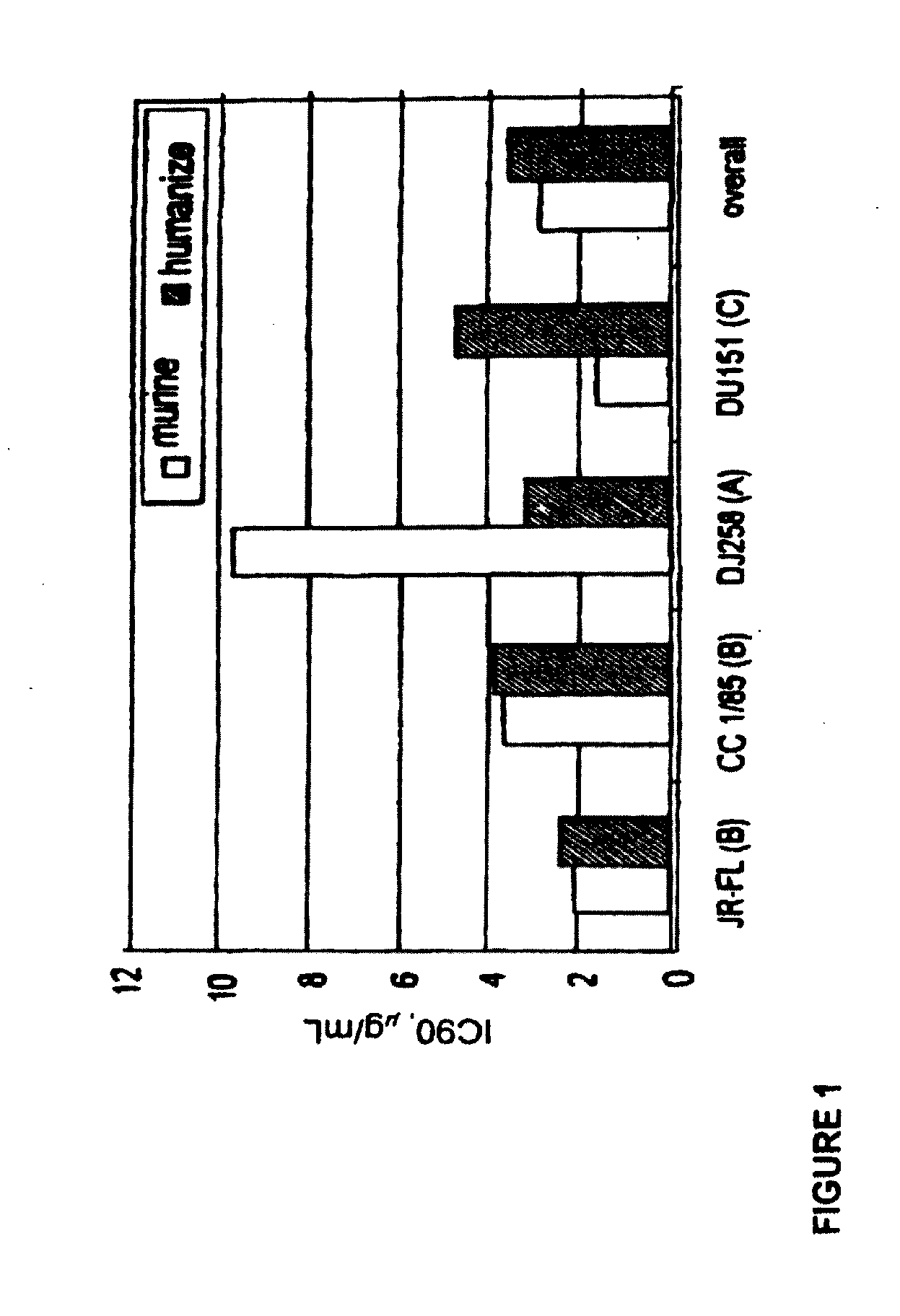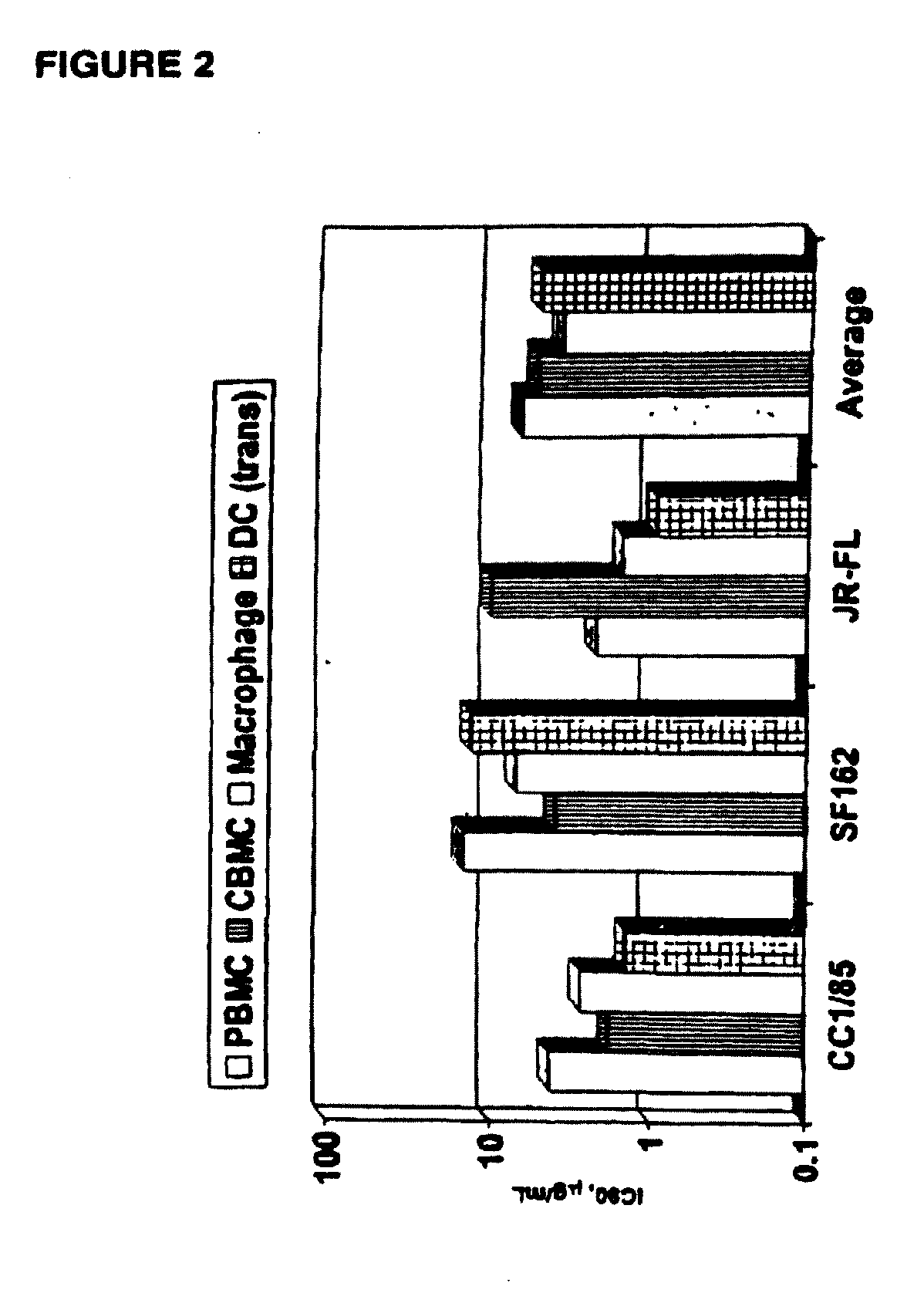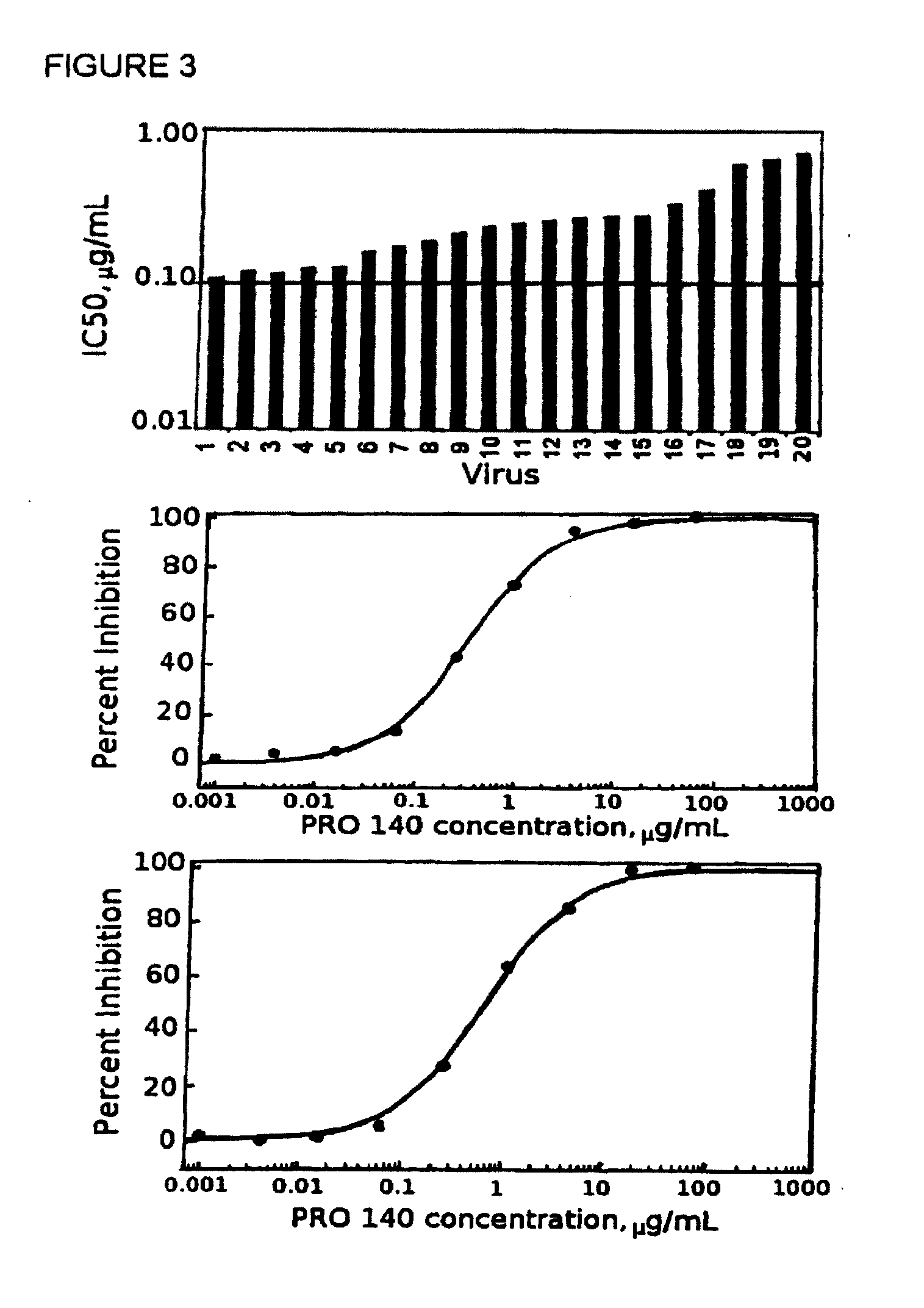Methods for reducing viral load in hiv-1 infected patients
a technology for reducing viral load and infected patients, which is applied in the field of reducing viral load in hiv-1 infected patients, can solve the problems of poor oral bioavailability, local injection site irritation, and the efficiency of the above-mentioned coreceptors, and achieve the effect of reducing viral load and reducing hiv rna
- Summary
- Abstract
- Description
- Claims
- Application Information
AI Technical Summary
Benefits of technology
Problems solved by technology
Method used
Image
Examples
example 1
Combination Testing of PRO 140 and HIV-1 Entry Inhibitors in the Fluorescence RET Assay
Materials and Methods
[0231]Compounds and mAbs:
[0232]PRO 140 was prepared by expression in Sp2 / O cells using Hybridoma serum-free medium supplemented with 2 mM L-glutamine (Invitrogen, Carlsbad, Calif.). Bulk mAb was clarified using a 5.0 μm Depth filter (Sartorius, Goettingen, Germany) followed by passage over a 0.2 μm sterilizing grade filter (Sartorius). The mAb was purified by passage first over an affinity column (MabSelect Protein A column, Amersham, Piscataway, N.J.) and then by ion exchange chromatography (SP Sepharose Cation Exchange resin, Amersham). PRO 140 was nanofiltered using a Viresolve™ 10 Opticap NFP capsule (Millipore, Billerica, Mass.) followed by a 0.2 μm filter and concentrated / diafiltered over disposable TFF cartridges (Millipore). The mAb was then polished over a hydroxyapatite column (Bio-Rad, Hercules, Calif.), concentrated to 10 mg / ml in phosphate-buffered saline and stor...
example 2
Combination Testing of PRO 140 with Small Molecule, Peptide and Protein Inhibitors, and HIV-1 in the HIV-1 Pseudovirus Particle (HIV-1pp) Assay
Materials and Methods
Preparation of HIV-1 Pseudoparticles:
[0272]HIV-1 pseudoparticles (HIV-1pp) are generated in 293T cells by transient coexpression of an HIV-1-based NL4 / 3luc+env− plasmid and a construct encoding HIV-1JRFL Env. The NL4 / 3luc+env− plasmid was obtained from the NIH AIDS Research and Reference Reagent Program (Cat. No. 3418), and the HIV-1JRFL Env was inserted into the pcDNA3.1 vector (Invitrogen). Briefly, 293T cells are calcium phosphate transfected with a 1:1 ratio of NL4 / 3luc+env− reporter vector and Env expression vector in Hepes buffer (Profection Mammalian Transfection Kit, Promega). After 16 h the transfection medium is aspirated and fresh cell culture medium (DMEM with 10% FBS, glutamine and antibiotics) is added and the incubation is continued at 37° C. for an additional 24-32 h. Cell culture supernatants are collecte...
example 3
Combination Testing of PRO 140 with Small Molecule, Peptide and Protein Inhibitors in the HIV-1 Authentic Virus Replication Assay
Materials and Methods
[0286]Preparation of PBMCs:
[0287]Replication of authentic HIV-1 is measured in activated peripheral blood mononuclear cells (PBMCs) using the monocyte / macrophage-tropic HIV-1 clone, JRFL (HIV-1JRFL), for these studies.
[0288]PBMCs are isolated from 4 separate donors (Leukopacks) by centrifugation on a Ficoll gradient. CD8 cells are depleted using RosetteSep CD8 Depletion Cocktail (#15663, StemCell Research, Vancouver, BC). Cells are diluted to 4×106 / ml and added in equal parts to three T175-cm2 flasks and then stimulated by addition of one of the following media: IL-2 Medium [RPMI 1640 (#10-040-CV, Cellgro, Herndon, Va.), 10% FBS (#35-010-CV), 2 mM L-Glutamine (#25-005-CI), 100 U / ml IL-2 (Sigma, St. Louis, Mo.)]; PHA 5 Medium: [IL-2 Medium with 5 ug / ml Phytohemagglutinin PHA-P (PHA) (#L8754, Sigma, St. Louis, Mo.), filtered]; or PHA 0.5...
PUM
| Property | Measurement | Unit |
|---|---|---|
| Time | aaaaa | aaaaa |
| Time | aaaaa | aaaaa |
| Mass | aaaaa | aaaaa |
Abstract
Description
Claims
Application Information
 Login to View More
Login to View More - R&D
- Intellectual Property
- Life Sciences
- Materials
- Tech Scout
- Unparalleled Data Quality
- Higher Quality Content
- 60% Fewer Hallucinations
Browse by: Latest US Patents, China's latest patents, Technical Efficacy Thesaurus, Application Domain, Technology Topic, Popular Technical Reports.
© 2025 PatSnap. All rights reserved.Legal|Privacy policy|Modern Slavery Act Transparency Statement|Sitemap|About US| Contact US: help@patsnap.com



